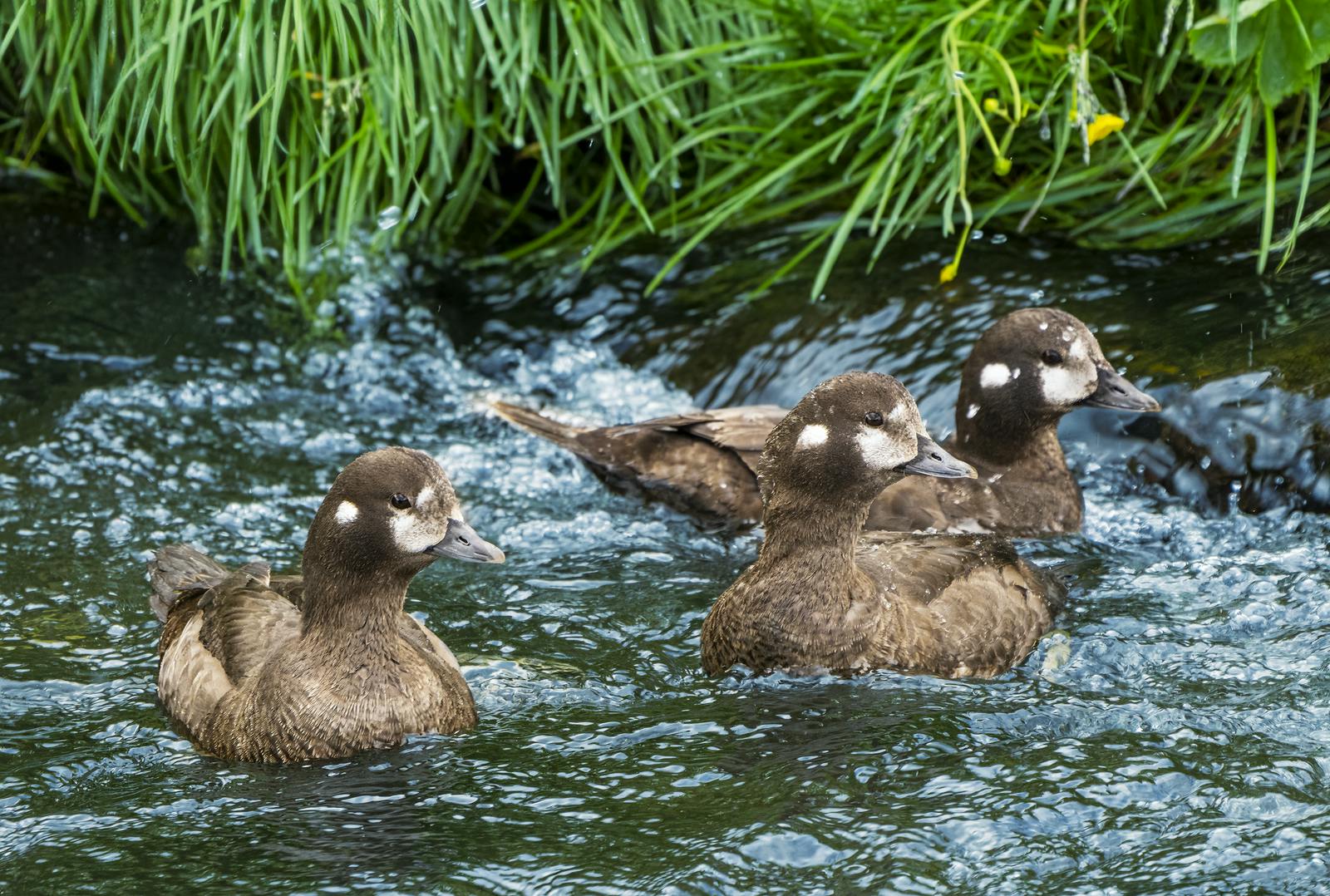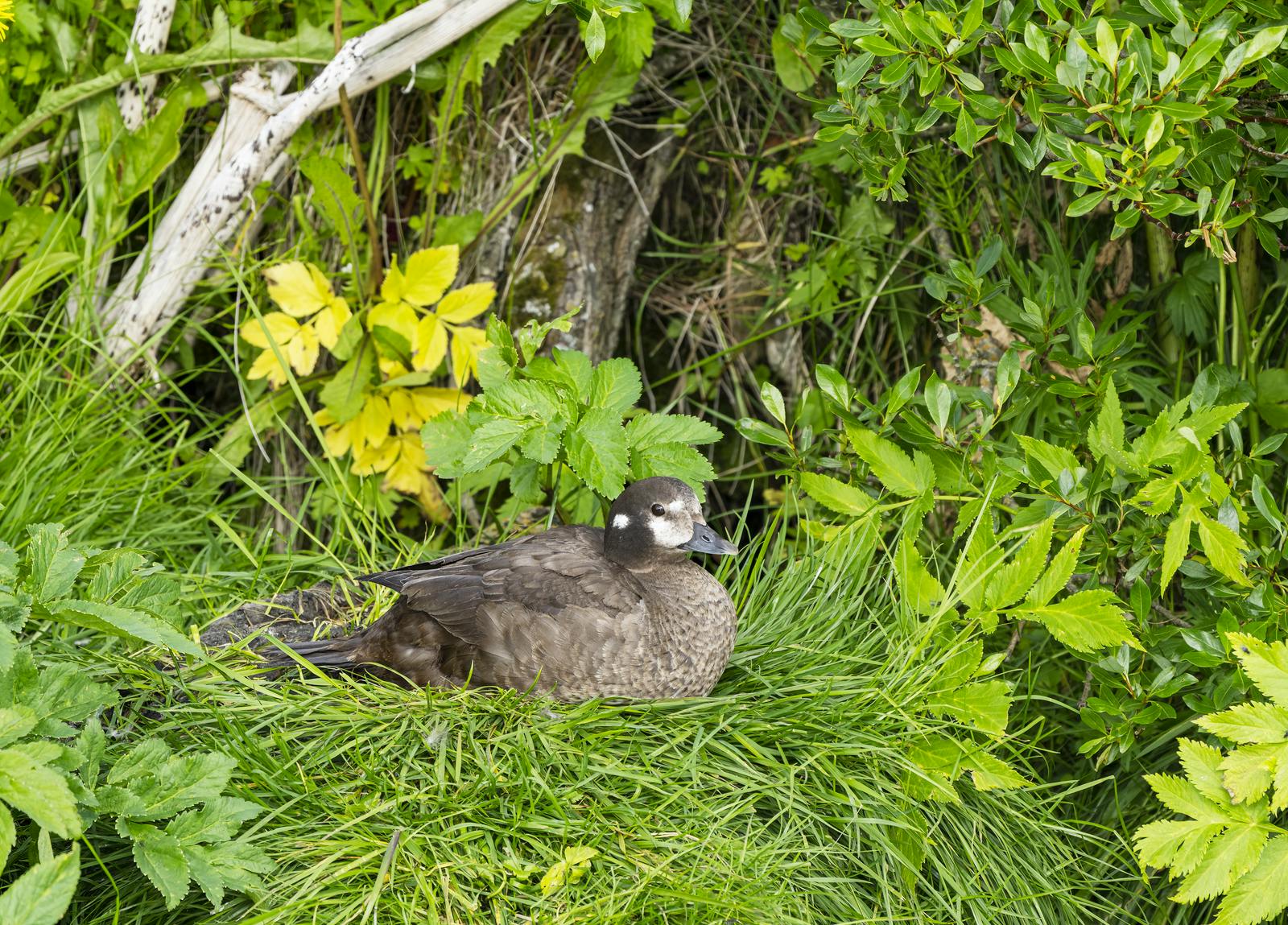
Find the Harlequin Duck (Straumönd) in Iceland
If you're a bird enthusiast visiting Iceland, spotting the Harlequin Duck, or straumönd as it’s called in Icelandic, is a must. Known for its striking appearance and love of fast-flowing rivers, the Harlequin Duck is one of the most captivating birds in the North Atlantic. With its slate blue plumage, white crescents around the eyes, and contrasting chestnut flanks, the breeding male is an absolute stunner.
A Little About the Harlequin Duck (Straumönd)
Native to North America and parts of the North Atlantic, the Harlequin Duck is a small, hardy sea duck that loves the rush of wild water. Unlike many other ducks that prefer calm lakes, these daredevils seek out fast-flowing rivers during summers, often tumbling and diving through icy rapids. During winter, they prefer the swelling sea.
Here’s a quick ID guide:
- Breeding males: Slate blue with bold white markings and chestnut accents.
- Adult females: More muted brownish-grey tones with distinctive white patches around the eyes.
- Often spotted in pairs, especially during mating season.

Best Places to Spot Harlequin Ducks in Iceland
1. Lake Mývatn (North Iceland)
Although the duck breeds all around in Iceland, the densest population is around Lake Mývatn and nearby rivers.
2. Ölfusá and Þjórsá Rivers (South Iceland)
These two rivers are known hotspots for breeding habitat during spring and early summer. The swift current and rocky riverbeds are ideal for these agile swimmers.
Pro Tip: Visit in May or June to catch breeding pairs in action. Early mornings offer the best light and activity.
3. Westfjords Region
Remote and rugged, the Westfjords are a haven for wildlife. The small streams and coastal inlets around Ísafjörður and Dynjandi waterfall are great for spotting these birds after the breeding season.
4. Látrabjarg Cliffs
While famous for puffins, Látrabjarg also provides a fantastic lookout for sea ducks along the crashing coastal waters below. Bring a spotting scope as you might see a pair of Harlequin Ducks riding the waves.
5. Þingvellir National Park
Þingvellir is surprisingly accessible; this UNESCO World Heritage Site isn’t just for geology enthusiasts. Some of the streams weaving through the park are known to attract Harlequin Ducks, especially outside the peak tourist hours.
Perlan: Reykjavík’s Natural Wonder
Now, here’s the urban twist. While Perlan itself isn’t a breeding site, it’s home to the Wonders of Iceland exhibit, which includes Iceland’s avian life and interactive bird displays. Start your journey here to get a feel for what to look for in the wild. Plus, Perlan's viewing platform gives you a panoramic view of Faxaflói Bay, where sea ducks, including the Harlequin, can occasionally be spotted bobbing offshore during the winter months.
Birdwatching Tips for Travellers in Iceland
Ready to find your first Harlequin Duck? Here are some quick tips to make your birding adventure a success:
- Pack binoculars and a spotting scope. Many of Iceland's ducks are found at a distance in rivers or coastal areas.
- Dress in layers. Icelandic weather changes faster than you can say “Harlequin,” so be prepared for wind, rain, and shine.
- Respect wildlife. Don’t get too close, especially during nesting season.
- Join a local bird tour. Especially if you're short on time, experienced guides know exactly where birds like to hang out.

FAQ
When is the best time to see Harlequin Ducks in Iceland?
Late spring to early summer (May–July) is the best time to spot them during their breeding season.
Are Harlequin Ducks rare in Iceland?
Not exactly rare, but they’re not everywhere either. You’ll need to seek out specific fast-flowing rivers and coastal spots.
Can I see Harlequin Ducks in Reykjavík?
They’re more likely to be found in the wild, but during winter, you might spot some in Faxaflói Bay. Perlan offers great info and exhibits about them.
What should I bring for birdwatching in Iceland?
Binoculars, weatherproof clothing, a bird guidebook, and lots of patience.
Can I take a guided birdwatching tour in Iceland?
Several companies offer specialised birding tours in South Iceland, the Westfjords, and beyond.







